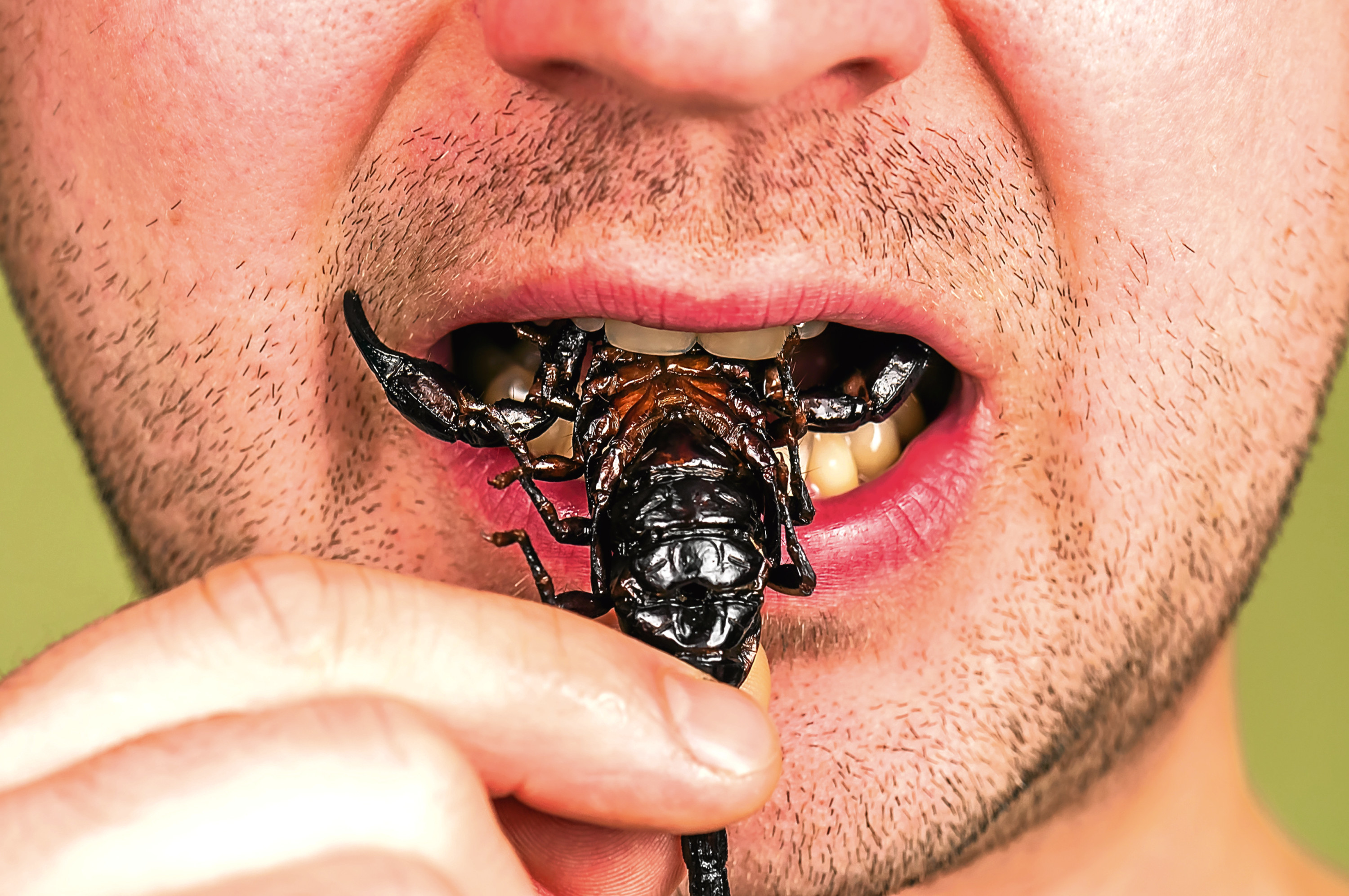
PASS the tarantulas, darling, and would you like more of that beetle on your salad?
If that all sounds a bit yucky, you may have to get used to it as it won’t be too long before we all have to live on insects, creepy-crawlies and other such things.
Silkworm, caterpillar, cricket and other such delights will one day replace steak and kidney pie, fish fingers and potatoes, because our planet is simply running out of “traditional” food.
Boffins reckon there are going to be too many of us, not enough animals to keep our stomachs full, and we’ll even run out of the land needed to grow crops.
Eventually, we will devour so many animals, they will become extinct and, with the planet’s population set to hit more than nine billion, this could happen as soon as 2050.
The United Nations’ Food and Agriculture Organisation (FAO) has already sounded clear, terrifying warnings about this, and if there was ever a great time to discover ways of producing food on other planets, this is it.
Many onlookers reckon vegetarians and vegans have things just right, as the things they live on will be more plentiful than what the rest of us eat.
For all of us, however, it’s time to start looking at people in our world who already tuck into beasties and crawlies, and prepare our minds — and stomachs — to face up to eating them ourselves one day.
The FAO say insects that are edible “contain high-quality protein, vitamins and amino acids for humans”.
Besides their undoubted nutritional value, eating them also has less impact on the planet than the more-traditional sources of protein.
Also, taking crickets as an example, they would require a sixth of the feeding cattle do, if we were all to start eating them.
Insects emit less greenhouse gas, and can be cultivated on organic waste.
France, often very forward-looking in culinary matters, has already been carefully looking at how to harness insects’ potential on a mass scale.
A company called Ynsect has been conducting experiments to find the best insects for producing powdered protein in bulk, for instance.
“Ynsect has been working on many insects in its research and development lab, but has selected one species to go on the market first, a small beetle called mealworm,” says Antoine Hubert, CEO of Ynsect.
For some Westerners, they are already aware of insects’ potential and have been trying them now and again, here and there, letting their taste buds get used to something many of us will struggle to face up to.
For others, it’s a case of: “Hope I’m dead and gone before they’re putting that sort of stuff on my plate!”
They do say that, when in doubt, douse it in your favourite mayo or ketchup, but we don’t think that’s going to help with beetles and crickets, somehow!
It is, of course, a decidedly- serious issue, and one that will affect kids not too many generations ahead.
Let’s pray they can cope with it, because it’s all a bit creepy, and crawly, to us . . .
READ MORE
Gardeners urged to help prevent decline in bee population
10 myths you shouldn’t believe about your food

Enjoy the convenience of having The Sunday Post delivered as a digital ePaper straight to your smartphone, tablet or computer.
Subscribe for only £5.49 a month and enjoy all the benefits of the printed paper as a digital replica.
Subscribe